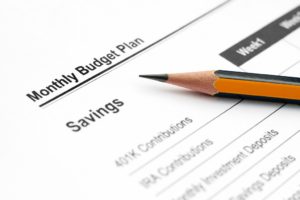
It seems counter-intuitive that paying down debt is indeed saving. We tend to think that if we are not directly putting money into a savings or retirement account, we haven’t gained anything. Reports from Ramsey Solutions using data from the Federal Bank Statistics and U.S. Census Bureau indicates that the average credit card debt per household is $14,241; mortgage loans average $202,454, and student loans average $58,112. The report indicates many individuals delay making big life decisions such as buying a home or getting married because of their debt.
The weight of debt can be overwhelming at times, and it may often feel like you can’t get ahead, especially regarding savings. Don’t be discouraged though as you think about paying down your debt to help increase your savings. The best time to begin is now and taking small steps will help you achieve your goals of paying down debt and saving more.
Step 1… List Out Your Debts
- Make a list of all your debts (i.e. credit cards, student loans, family loans, mortgages, retail accounts, etc.).
- This allows you to see and track whom you owe, how much you owe, and payment information for each debt. Putting this information all together lets you see the whole picture and begin the next steps.
Step 2… Determine Your Monthly Expenditures
- Create a list of known expenses each month (i.e. utility bill, groceries, fuel, etc.).

- Doing so helps you determine how much money is being spent and which areas are a necessity or stay the same each month and which areas are more discretionary or can change. If you are not sure what your spending might be for some categories, that’s okay. An easy way would be to save all your receipts for the coming month and then total expenses for each category to get a better idea of where your funds were spent.
Step 3… Savings Goals
- Write down 1-3 simple goals for the year to help you determine where you would like to increase savings by reducing debt.
- Saving and reducing debt can more achievable. (i.e., I want to pay off my Visa credit card or I want to put an extra $25/month towards my student loan payments.)
Step 4… Start Small
- Paying down debt by contributing just a little extra each month can make a big difference.

- For example, if my credit card balance is $1,500 and I make the minimum payment of $33/per month. At 14% interest, it will take me 5 years to pay off that debt and it will cost me over $600 in interest expenses. If on the other hand, I put an extra $17/month towards my credit card payment ($50/per month) I can pay off the credit card debt in just three years. I also pay $300 less in interest.
Step 5…Don’t Be Discouraged
- Paying down debt can sometimes feel like it takes an eternity and that you aren’t getting anywhere.
- Don’t be discouraged, instead celebrate small successes along the way!
- Find a friend, family member, or financial professional to help be your “champion” in paying down debt. Ask them to help you be accountable for your efforts.
- If you feel overwhelmed by your debt and it’s impacting other areas of your life including your mental and/or physical well-being, work, and/or relationships; then don’t be afraid to reach out for help.
- By paying down your debt you not only reduce your ongoing financial obligations but also relieve stress and worry.
 Start paying down debt today and increase your savings!
Start paying down debt today and increase your savings!
#ASW2023 @AmericaSaves #ASW2023

